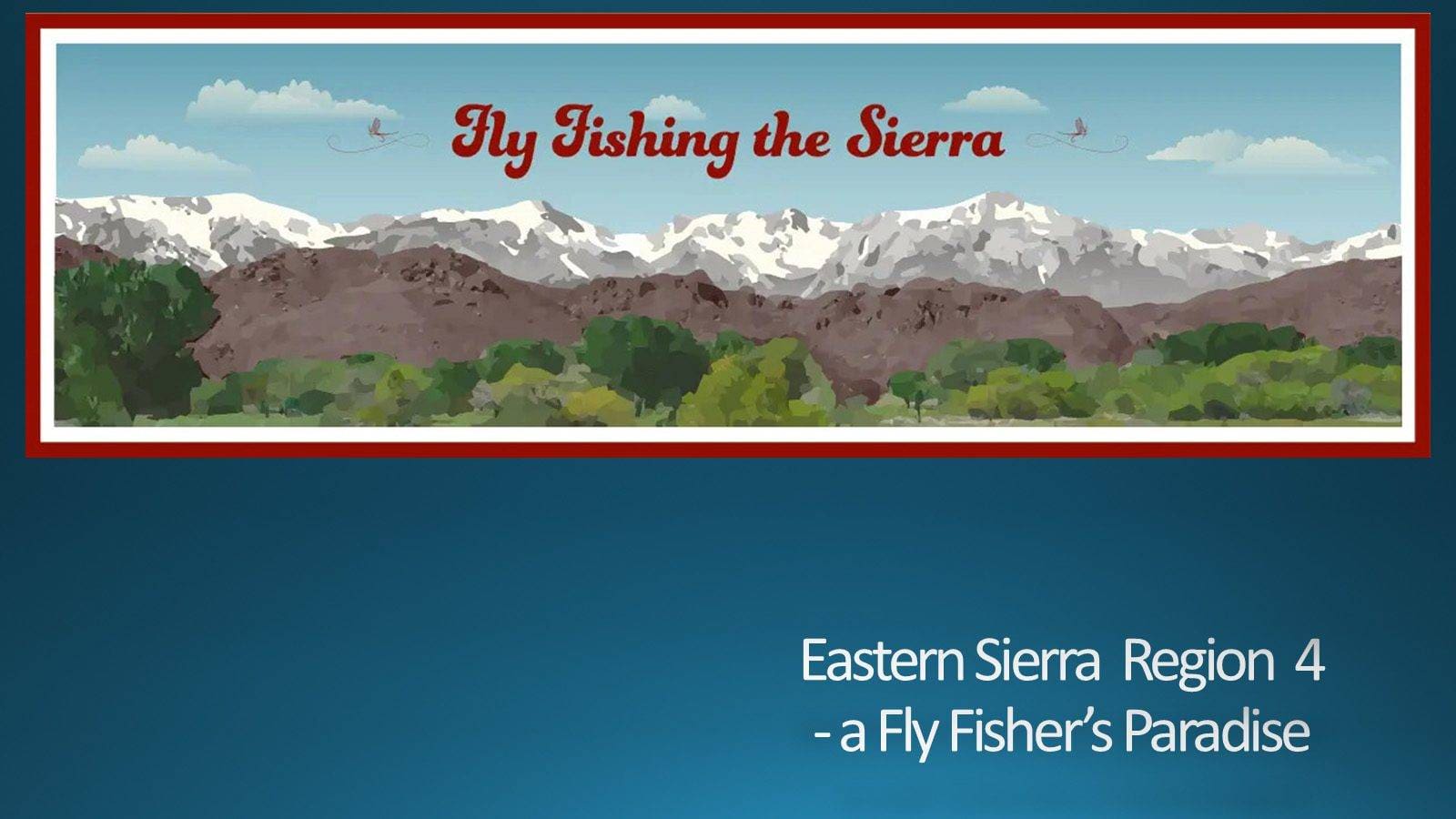
Sierra Nevada Welcome to Fly Fishing the Sierra
Overview

I started this website in 2002 with the intent to retain information about fly fishing the Sierra for my personal use. The internet was relatively new at the time and I had to learn HTML code written on Notepad to get started. Unlike a book or journal, the web site can be easily amended and updated. Content can be maintained in current time and I can share this information with anyone on the web. I organized the site into an educational tab that would cover Casting, Reading the Water, Description of Equipment, and Fish Identifications. In addition, I put together a Fly Box covering many of the flies available to fish the Sierra and put together locations where you can access good fishing sites. In 2012, an online store was added to support the fly tying patterns that were listed and this store was expanded in 2017 to include fly fishing gear, rods, reels, and packs. In 2024, the site was converted to WordPress allowing a dynamic ability to view on multiple devices.
Fishing Maps

Fishing Maps
Fishing Maps are available through the online store with 18 Regional maps covering all of the Sierra Nevada. In addition, There are detailed maps of the "The Owens River Series" , "Kern River Series", "Kings River Series", "Carson River Series"
Maps include:
- Hatch Chart with Insect Identification
- Suggested Flies
- Fishing Season and Regulations
- Stream Etiquette
- GPS Longitude and Latitude
- Trailheads and Trails
- MYLF Restoration Sites
- Mile Markers
- Fish Identification
- Topographic Relief
- Printed on Heavy Presentation Bond and Hand Folded
- Only $12.95 per map.
Some Interesting Facts about the Sierra:
- There are 20 major Rivers, 14 on the West Side and 6 on the East Side. These are within over 24 watershed areas.
- Historically, there were no trout in the Sierra above 6000 feet. Except for Goldens in the Upper Kern and Lahontan Cutthroats within the Carson, Walker, and Truckee River Drainage.
- Starting in the mid 1800's, trout have been stocked into 85% of all the lakes in the Sierra over 2 acres in size.
- There are 649 lakes in Inyo, Sierra, and Toiyabe National Forests of at least 25 acres between 10660' and 11,480' elevation. 85% of these lakes contain trout: (Christenson 1977)
- 60% Brooks
- 36% Rainbows
- 32% Goldens
- 5% Browns
- There are 1,404 lakes above 7,900' elevation within the Sierras. Of these lakes, trout are in 63%, the rest fishless: (Jenkins 1994)
- Goldens are in 36% of all lakes
- Rainbows are in 33% of all lakes
- Brookies are in 16% of all lakes
- Browns are in 8% of all lakes
- Lahontan Cutthroats are in 1/2% of all lakes
- Fish Planting ended within most of the Sierran National Parks beginning in 1970. Today, National Forests within the Sierra Nevada have 85% of their lakes with fish and the National Parks have 40%.
Donations are Welcome
Online Store
The online store carries all of the fly tying materials listed within the patterns of the Fly Box. I bring together materials from Hareline Dubbin, Nature's Spirit, Umpqua Feather Merchants, Firehole Outdoors, Whiting Farms, and Montana Fly Company. I do not sell flies but just the materials and tools to tie your own flies.
Fly Fishing gear, such as waders, packs, rods, and reels, are available from Adamsbuilt. Expect 3-5 day delivery. Purchase securely through Google Pay. US Domestic sales only.

Favorite Links
California Fly Fishing Report
California Fly Fishing Reports Forum
California Freshwater Fishing Regulations
California Fishing Regulations Map
California DWF Fishing Guide Map
Charlie's Fly Box
Dave's Sierra Fishing
Danish Fly Design-Tommy Olinsson
Fly Fishers International
Fly Anglers Online
Global Fly Fisher
Hans Weilenmann's Fly Tier's Page
High Sierra Topix
Kern River Fish Reports
North. Calif. Fly Fishing Forum
Sexyloops
Sierra Drifters Fish Report
Southwest Council Fed of Flyfishers
The Fly Shop Stream Report
The Itinerant Angler
The Troutfitter Fish Report
Washington Fly Fishing
Library - Your Source for great books
New Blog Addition
Eastern Sierra Region 4, A Fly Fisher's Paradise
I had the honor of presenting a program that included an area within the Eastern Sierra that I refer to as "a fly fisher's paradise". This is the region that includes Crowley Lake, Upper Owens River, Mammoth Lakes, Rock Creek and the Little Lakes Valley, Fish Creek (Cascade Valley), Upper McGee Creek, and Pine Creek. I originally put this together for Fresno Fly Fishers in Oct 2024 and was asked to present this program to (7) Southern California clubs within a 10 day period in June. I had a blast. I followed up with presentations in September with San Diego Fly Fishers and Kern River Fly Fishers. The program was well received and I told the clubs that I would post this presentation within my Blog.

